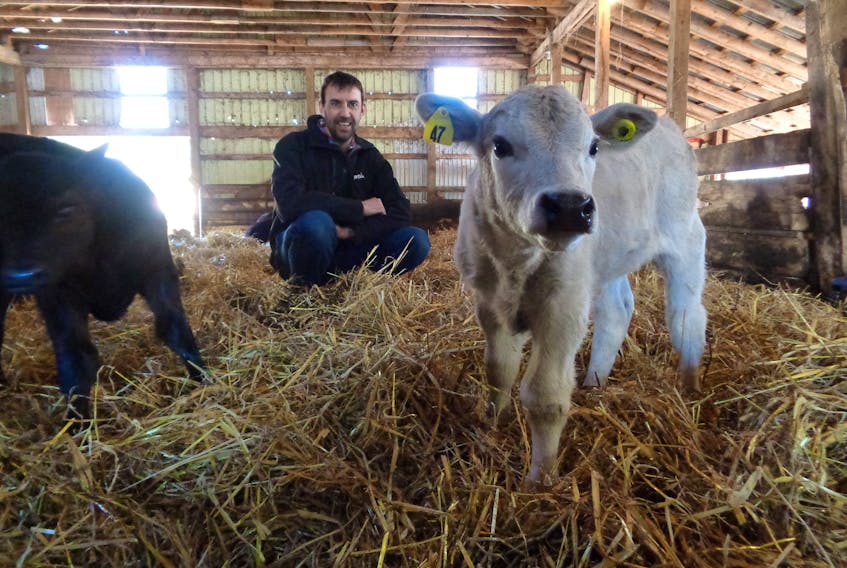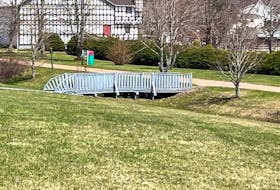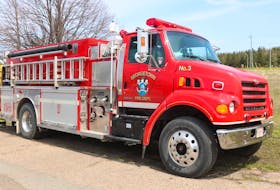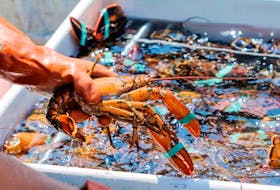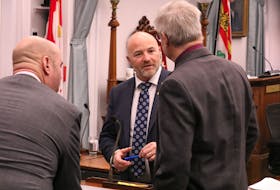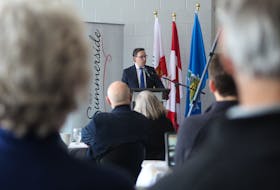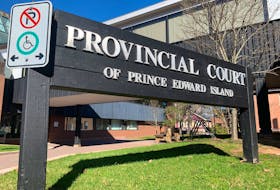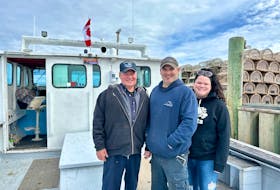FREETOWN, P.E.I. — During the summer season, Bryce Drummond’s beef cattle spend their time in lush green foliage, munching on plants that aren’t usually found in a grassy meadow.
They’re chowing down on a new cover crop Drummond is developing with his employer, McCain Produce Limited.
“We’re trying to find something that will work for everybody,” said Drummond, who also has a small beef herd in Freetown, P.E.I. “Eight or more species help build the soil.”
Cover crops are not grown for profit, rather, they play a role in rebuilding the soil between potato years.
Drummond is working on a 12-seed mixture. His research started in 2017 when he planted his first crop. The idea came from farmers looking for a way to rebuild their soil without manure. The pungent product is scarce on P.E.I. these days with fewer beef farms than ever.
So, Drummond and an Ontario farmer put their heads together to develop a seed mixture for farmers to plant in the years they’re not growing potatoes – one that keeps underground pests like wireworm and nematodes in check while replenishing the soil.
The plants in the seed mixture work like a team, each playing a different role to cycle nutrients.
Cover cropping has been used in organic systems for years. Drummond is hoping the microbial benefits will help conventional farm systems as well.
Microbes are tiny living things do all kinds of jobs – in the soil, some microbes help break down organic material and release nutrients.
“There’s billions of microbes in the soil. Basically, there’s more microbes in a teaspoon of soil than there is people on earth. So, we want to have a buffet for these microbes to eat,” said Drummond.
AT A GLANCE
Bryce Drummond’s mixtures contain lots of seeds from various plants, including sorghum Sudan grass, pearl millet, buckwheat, forage peas, chickling vetch, sunflower, tillage radish and phacelia
Green manure: Grown and plowed under. Brings nitrogen closer to the surface.
Bio-fumigant: Breaks a disease cycle, pests don’t thrive on it.
Catch crop: Planted in the fall and uses up excess phosphorus or nitrogen, “catching” it before it can leach into the water.

By planting a variety of plant species, it activates the microbes by feeding them, he said.
“They’re the life of your soil. If you stimulate your microbes, you make your soil more active, which in return makes your soil more healthy.”
Carolyn Marshall, a post-doctoral researcher with Dalhousie University, has made cover crops her area of expertise.
“We know they contribute to nutrient cycling, so if you’re adding a cover crop you need the microbes there to break that down so they can provide nutrients for your following crop.”
Cover crops can reduce the cost of chemical amendments by reducing the need for fertilizers as they make nutrients more available for the next year’s crop.
They can even help reduce pesticide use if they break up a disease cycle by interrupting the pest life cycle.
There are about 25 farmers trying out Drummond’s innovative seed mixtures, which he says are still in the testing phases. Some farmers are splitting fields so Drummond can collect soil samples from each side. He’ll be collecting information as the seasons go on to determine the effects.
Response has been positive so far, as most farmers who tried it are going to plant it again.
All the farmers Drummond deals with want to preserve and improve their fields.
“They’re not sitting there trying to mine their soil, they’re trying to make sure that they leave the soil in better shape than they got it for their next generation. Farmers are stewards of the land. They’re environmentalists in their own way.”

